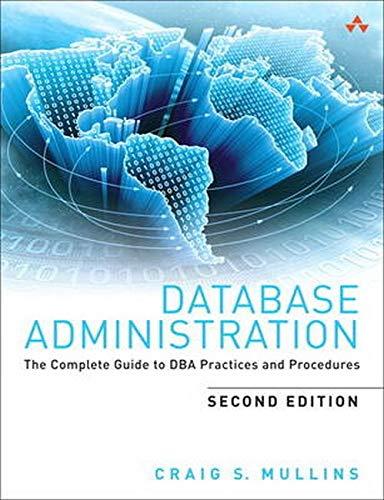Question
Assignment 3 deals with stacks and queues. You must implement these structures using linked lists, as described in class. Be sure to adhere to the
Assignment 3 deals with stacks and queues. You must implement these structures using linked lists,
as described in class. Be sure to adhere to the concepts of abstract data types as much as possible.
Program Summary
You're to create a program that implements both a stack and a queue, and processes commands
allowing the user to manipulate these structures.
Since your program will have
two distinct structures
, it will operate in two possible
modes
: stack
mode; and queue mode. In stack mode youre working with the stack, and in queue mode youre
working with the queue. The program should start in stack mode.
Legal commands are as follows:
s print the current contents of the stack on one line, separated by spaces, with the
top of
the stack
at the left (don't show the sentinel); and then set the current mode to stack mode
(so if youre already in stack mode, s just prints the stack).
q print the current contents of the queue on one line, separated by spaces, with the
head of
the queue
on the left (don't show the sentinel); and then set the current mode to queue mode
(so if youre already in queue mode, q just prints the queue).
Any integer - push onto the stack (if youre currently in stack mode); or insert at the tail of
the queue (if youre currently in queue mode)
p - either pop the top of the stack (stack mode) or remove the item at the head of the queue
(queue mode) and print the item popped or removed (not the entire stack or queue).
Q - exit the program (
be sure to free all memory!)
anything else should give a help message.
Details
Implement the stack using a linked list; implement the queue using a second linked list (so you'll
have two sentinel nodes, each pointing to a different linked list). You should use these lists as
described in class (summarized below):
For the stack, push new elements by adding a node immediately after the sentinel, and pop from the
same location. For the queue, the head is the node immediately after the sentinel, and the tail is at
the far end of the list.
Notes
You shouldn't run out of memory in the tests I'll conduct (assuming your code is well-written). If the
user tries to remove an item from an empty structure (stack underflow, or removing from an empty
queue),
give an appropriate error message
but continue accepting commands, and
do not corrupt
your structures!
Moving between stack mode and queue mode
should not
affect the contents of
these data structures.
Test your code thoroughly, include good comments, include a makefile to create your executable
program (which must be named "pa3")
#####################################################################
This is how the program should do.
Welcome. This program demonstrates the use of a stack and a queue. Usage: # insert # into stack or queue s select STACK mode and display stack q select QUEUE mode and display queue p remove top of stack/head of queue and display Q Quit ? Display help > s Switching to stack mode Stack is empty > 1 > 2 > 3 > s Switching to stack mode TOS--> 3 2 1 > q Switching to queue mode HEAD--> <-- TAIL > 1 > 2 > 3 > q Switching to queue mode HEAD--> 1 2 3 <-- TAIL > p 1 > q Switching to queue mode HEAD--> 2 3 <-- TAIL > s Switching to stack mode TOS--> 3 2 1 > p 3 > s Switching to stack mode TOS--> 2 1 > Q // this to quit the program.
Step by Step Solution
There are 3 Steps involved in it
Step: 1

Get Instant Access to Expert-Tailored Solutions
See step-by-step solutions with expert insights and AI powered tools for academic success
Step: 2

Step: 3

Ace Your Homework with AI
Get the answers you need in no time with our AI-driven, step-by-step assistance
Get Started


